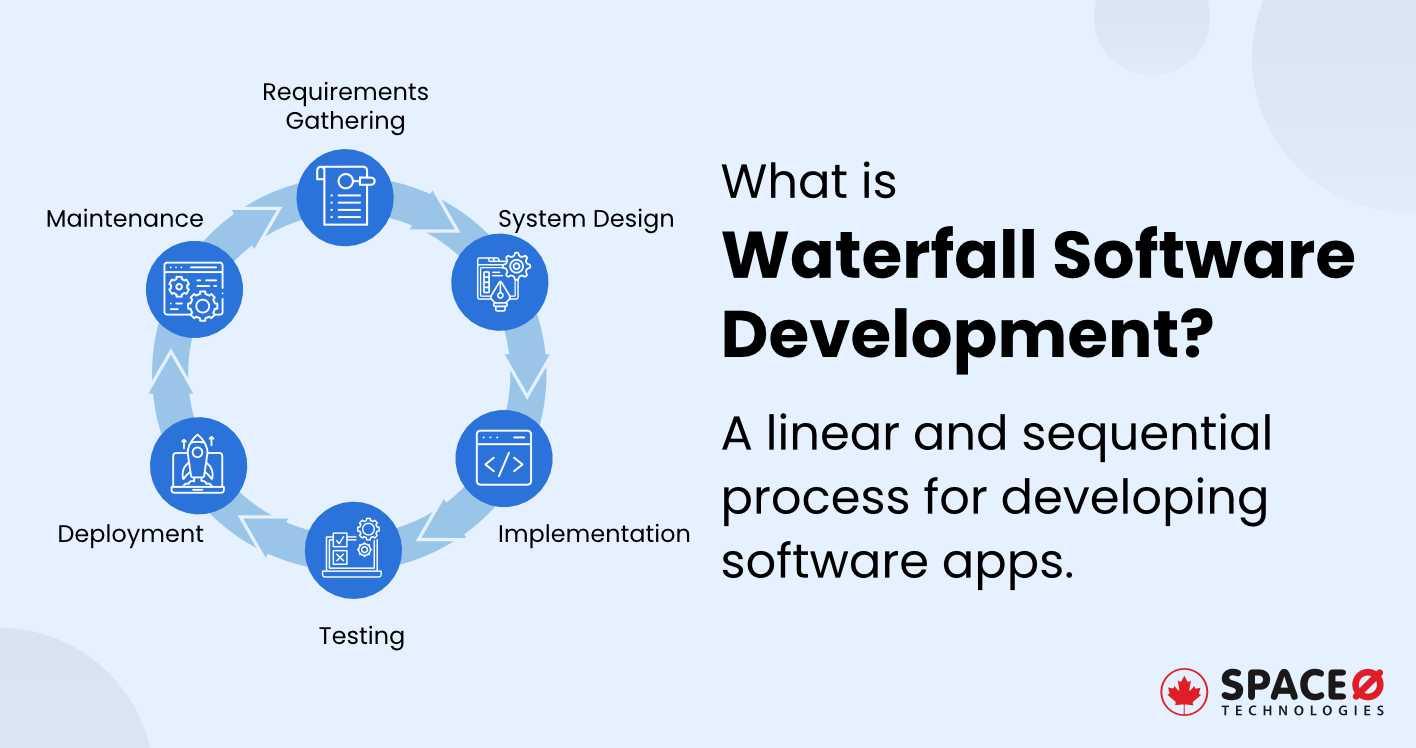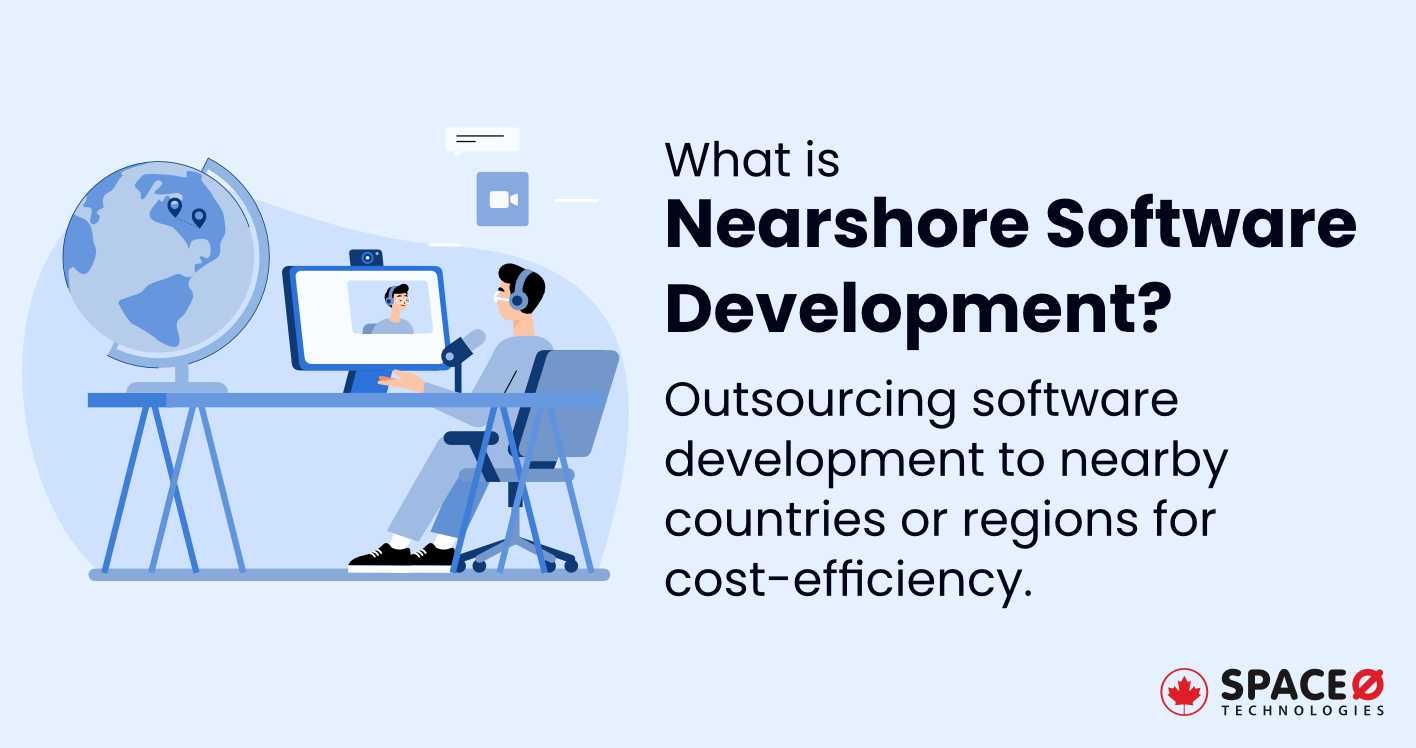
What is Waterfall Software Development Methodology? [Definition + Benefits]
What is Waterfall Software Development Methodology?
Waterfall software development methodology, is an organized, linear, and sequential approach for developing and managing software projects. In the waterfall model, the process moves to the next stage only when the previous phase is completed.
The waterfall method is based on the idea that each phase of the approach corresponds to a different phase in the project’s life cycle. This methodology evolved from manufacturing and construction practices and is now used in software engineering projects.
The waterfall model is one of the oldest and most exceptional approaches used for project management. To better understand waterfall software development, you need to consider its step-by-step approach and how each phase depends on the previous phase. Let’s discuss all of the different phases of the waterfall Model.
Table of Contents
6 Different Phases of Waterfall Model
Let’s discuss each phase in detail.
Thoroughly Understand User Needs and Specifications
For a project’s success, you need to make sure the requirements of the project are clear and well-defined. This first phase involves conducting detailed requirement analysis and comprehensive documentation. The entire focus of this phase is to create a clear and complete set of specifications that outline the functionalities and features of the software.
Strategically Plan and Architect Your Project
Once you understand and document the requirement, now you need to define the entire structure of the software from the planning project to the architectural design. This design phase involves determining the software technologies and tools, planning the development timeline, and the resources that will be involved in the project.
Translate Well-defined Plans into a Functional Codebase
After you define the structure in the design phase, based on the design specification, coding is executed by the development team. This implementation phase includes writing codes, developing modules, and providing functionalities as per the physical design.
Methodically Verify and Validate Every Aspect of Software for Quality
Once the code is developed in the implementation phase, the software goes through thorough testing to ensure that it fits the defined requirements and functions as expected. Different forms of testing are performed to identify and resolve faults and issues in the software. This testing involves unit testing, integration testing, system testing, and user acceptance testing.
Proficiently Launch and Seamlessly Integrate Your Software
Only after passing testing and quality, the process is moved further. In this phase, the software is prepared for release and integrated into the user’s environment. Installation, configuration, and data migration are all tasks that are completed during this phase. The main objective of the deployment phase is to provide a smooth transition from development to production.
Continuously Monitor, Update, and Optimize the Software
This final stage is known as the post-deployment period. This step is really important for ensuring the software keeps working well and stays useful even after it’s given to people to use. This maintenance phase includes monitoring the software’s performance, managing and resolving any issues that arise in the software, and carrying out regular updates to keep the software functional and up-to-date.
After learning all the different phases of the waterfall model, you might want to know what are the other methodologies and how these methodologies work. Check our blog on software development methodologies which helps you to understand about different methodologies. Now, let’s cover the advantages of the waterfall methodology.
After learning all the different phases of the waterfall model, let’s provide you with the advantages of the waterfall process.
8 Advantages of Waterfall Methodology
Many software development agencies are using the waterfall method to stay ahead of the competition. Here are the benefits involved with the waterfall method.
- The waterfall method helps in reducing or eliminating confusion as the project scope and requirements are clearly defined from the start.
- Everything is planned in advance which helps in managing the time and cost in a better way.
- Involves following a set order of steps that ensures the project progresses steadily.
- Helps in creating documents throughout the process, this is helpful for future updates and changes.
- Testing is carried out systematically, which results in a stable testing environment.
- Risks are easily identified and addressed in the planning phase, reducing unexpected issues during development.
- Changes to the project are fewer, this leads software developers to work efficiently without any disturbance.
- There are a few chances of misunderstandings as waterfall projects often have clear roles and responsibilities for each team member.
7 Limitations of Waterfall Methodology
Here are the 7 limitations of waterfall methodology.
- The fixed sequences of phases make it difficult to adapt to changes once development is started.
- During the testing phase, there are chances to encounter issues which affect the development process.
- The demanding nature of this iterative process necessitates that only after one stage must the other be completed, which might result in project timelines being extended.
- The client’s only involvement is at the beginning of the project, engaging throughout the process is not carried out.
- If any of the phases is a bit delayed, it has an effect on the next phase, causing interruptions in the development process.
- Carrying out complex and smaller projects with evolving requirements using waterfall methodology can be challenging because of the fixed phases.
- Waterfall’s linear methodology makes it difficult to adjust to ever-changing market conditions and client preferences.
In conclusion, the waterfall model goes through various stages such as understanding what’s required in the software, planning, creating the software, checking, deploying and maintaining the software. Waterfall method is good for projects with clear requirements, but this might be challenging when changes need to be made after the process has started. However, using the waterfall approach is essential to ensure you get the right software solution that works effectively for your needs.
All our projects are secured by NDA
100% Secure. Zero Spam
*All your data will remain strictly confidential.
Trusted by


Bashar Anabtawi
Canada
“I was mostly happy with the high level of experience and professionalism of the various teams that worked on my project. Not only they clearly understood my exact technical requirements but even suggested better ways in doing them. The Communication tools that were used were excellent and easy. And finally and most importantly, the interaction, follow up and support from the top management was great. Space-O not delivered a high quality product but exceeded my expectations! I would definitely hire them again for future jobs!”

Canada Office
2 County Court Blvd., Suite 400,
Brampton, Ontario L6W 3W8
Phone: +1 (437) 488-7337
Email: sales@spaceo.ca




